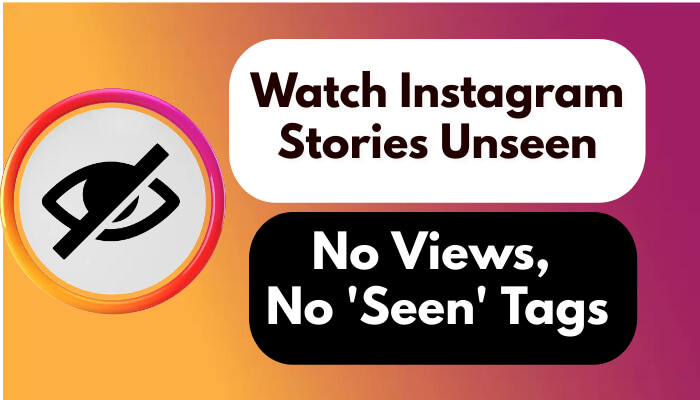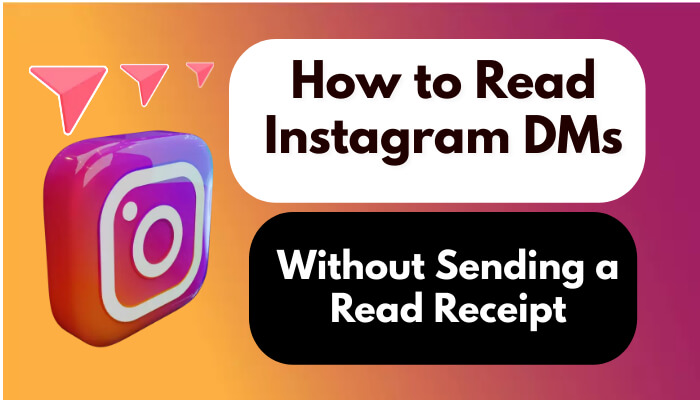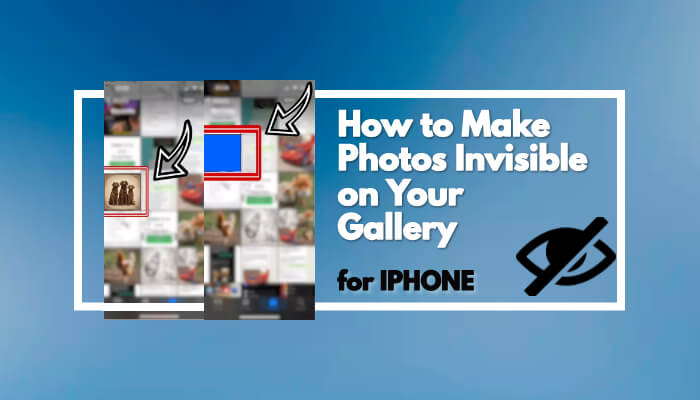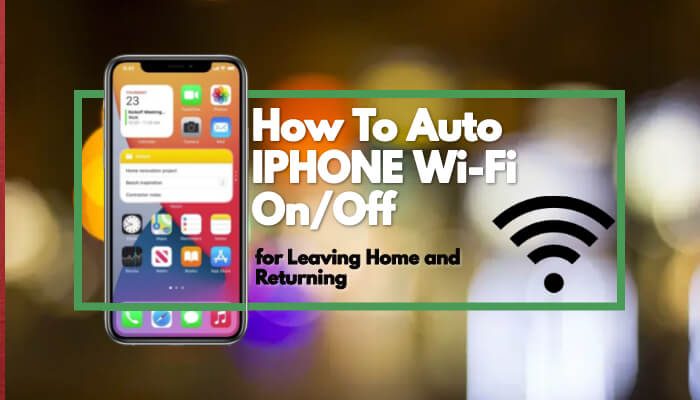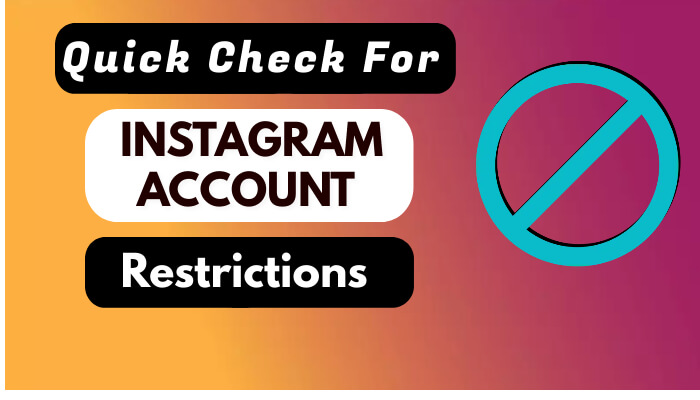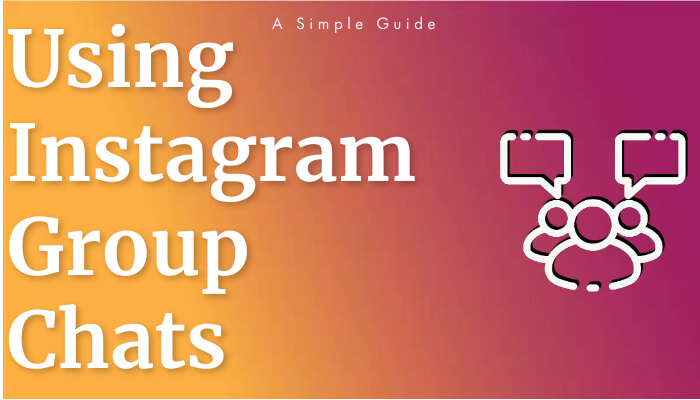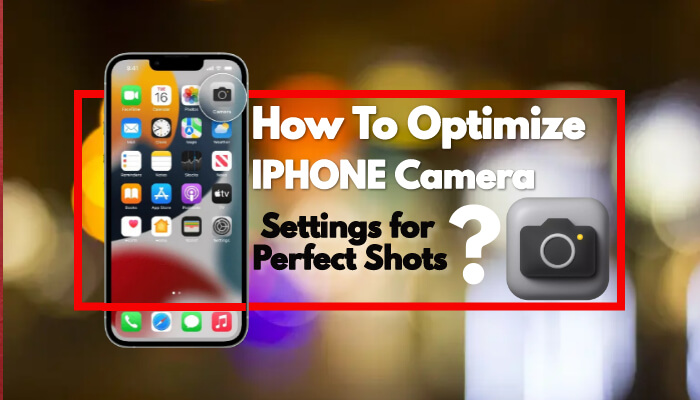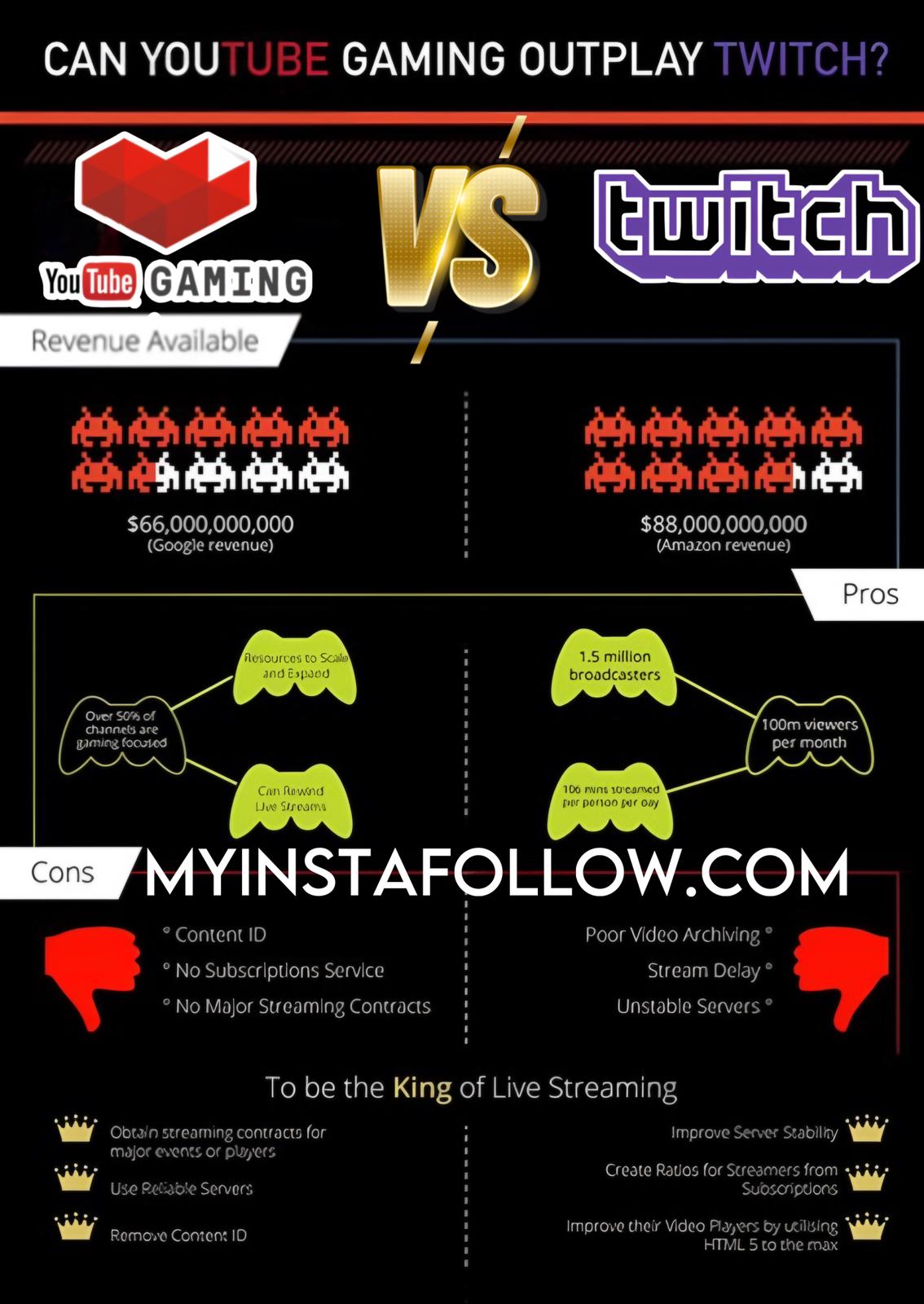
Live streaming has become a popular form of entertainment and content creation, with platforms like Twitch and YouTube Gaming leading the way. In this blog post, we will compare and contrast the features and benefits of both platforms, helping you choose the best one for your needs. We will delve into audience engagement, content creation tools and accessibility, monetization options, community interaction, and discoverability opportunities. Whether you're a seasoned streamer or just getting started, this comprehensive analysis will provide the insights you need to make an informed decision and maximize your success.
Platform overview: Twitch vs YouTube Gaming
When it comes to live streaming platforms, Twitch and YouTube Gaming are two of the most popular options for content creators and viewers alike. Both platforms offer unique features and benefits, making it challenging to choose between them. In this article, we will provide a platform overview of Twitch and YouTube Gaming, highlighting their key differences and similarities.
1. Content-rich Experience: Twitch and YouTube Gaming both provide a content-rich experience for users. Twitch focuses primarily on live streaming, allowing gamers and other creators to broadcast their content in real-time. On the other hand, YouTube Gaming offers a combination of live streaming and on-demand videos, giving users access to a vast library of gaming content.
2. Audience Engagement: Engagement is a crucial aspect of live streaming platforms, and both Twitch and YouTube Gaming offer various features to enhance audience interaction. Twitch provides a live chat feature, allowing viewers to communicate with streamers in real-time. YouTube Gaming also offers a chat feature, along with the ability to leave comments and engage with the community.
3. Monetization Options: For content creators, monetization is an essential consideration. Twitch and YouTube Gaming provide different options for earning revenue. Twitch offers partnerships and a subscription model, allowing viewers to support their favorite streamers through monthly subscriptions. YouTube Gaming, on the other hand, enables creators to monetize their content through ads, sponsorships, and channel memberships.
| Twitch | YouTube Gaming |
|---|---|
| Focuses on live streaming | Combination of live streaming and on-demand videos |
| Live chat feature for audience engagement | Chat, comments, and community interaction |
| Partnership and subscription model for monetization | Ads, sponsorships, and channel memberships for monetization |
Overall, both Twitch and YouTube Gaming have their own strengths and advantages. Twitch is known for its immersive live streaming experience and dedicated gaming community. On the other hand, YouTube Gaming offers a broader range of content options, including on-demand videos and live streams. Ultimately, the choice between the two platforms depends on the specific needs and goals of the content creator. Whether you prefer the real-time interactions of Twitch or the diverse content library of YouTube Gaming, both platforms offer exciting opportunities for gamers and creators to engage with their audience.
Audience engagement: Live streaming features comparison
Live streaming has become an increasingly popular form of entertainment and communication, with platforms like Twitch and YouTube Gaming leading the way. These platforms offer a range of features that can enhance audience engagement and create a more interactive experience. In this blog post, we will compare the live streaming features of Twitch and YouTube Gaming, highlighting their similarities and differences to help you determine which platform is best for you.
One of the key aspects of audience engagement in live streaming is the ability to interact with the streamer and other viewers in real time. Both Twitch and YouTube Gaming offer chat functionality, allowing viewers to comment and ask questions during a stream. However, Twitch takes it a step further with its emotes feature. Emotes are custom emoticons that can be used in chat to express different emotions or reactions. This adds a unique element to the chat experience and can help foster a sense of community among viewers.
In addition to chat features, both platforms also offer ways for viewers to financially support their favorite streamers. Twitch has a feature called "Bits," which allows viewers to purchase virtual currency and cheer for their favorite streamers by sending them Bits. These Bits can then be converted into real money for the streamer. YouTube Gaming, on the other hand, offers a similar feature called "Super Chat." Super Chat allows viewers to pay to have their messages highlighted during a livestream, making it more likely that the streamer will see and respond to their comment. This provides a direct way for viewers to show their support and encourages streamers to engage with their audience.
- Chat functionality
- Emotes feature
- Bits and Super Chat
| Feature | Twitch | YouTube Gaming |
|---|---|---|
| Chat functionality | Yes | Yes |
| Emotes feature | Yes | No |
| Bits and Super Chat | Yes | Yes |
These are just a few examples of the live streaming features offered by Twitch and YouTube Gaming. Both platforms have their own unique strengths and it ultimately comes down to personal preference and the type of audience you want to engage with. Whether you're a streamer looking to build a dedicated fanbase or a viewer seeking a more immersive live streaming experience, both Twitch and YouTube Gaming have a lot to offer in terms of audience engagement.
Content creation: Tools and accessibility
When it comes to content creation in the world of online streaming, having the right tools and accessibility is crucial. Whether you're an aspiring streamer or an established content creator, having the right equipment and software can make all the difference in creating high-quality and engaging content for your audience. In this blog post, we will explore some of the essential tools and resources that can help you take your content creation to the next level.
1. Hardware and Equipment
One of the first things to consider when it comes to content creation is having the right hardware and equipment. This includes a reliable computer or gaming console, a high-quality microphone, a webcam, and good internet connection. These tools are essential for creating a smooth streaming experience and ensuring that your audience can hear and see you clearly.
2. Streaming Software and Platforms
To stream your content to the world, you'll need streaming software and platforms. Some popular options include OBS Studio, Streamlabs OBS, and XSplit. These software allow you to customize your stream layout, add overlays and alerts, and interact with your audience in real-time. Additionally, you'll need to choose the right streaming platform for your content, such as Twitch or YouTube Gaming, depending on your target audience and goals.
3. Accessibility and Inclusion
Accessibility is an important aspect of content creation, as it ensures that your content is available to a wider audience. When creating your streams, consider adding closed captions or subtitles for viewers who are hearing impaired. You can also make use of accessibility features in your streaming software to provide a better experience for viewers with visual or mobility impairments. By making your content more accessible, you can reach a larger audience and make a positive impact on their viewing experience.
Conclusion
Content creation is an essential part of becoming a successful online streamer. By utilizing the right tools and ensuring accessibility in your content, you can provide an engaging experience for your audience. Remember to continually explore new tools and technologies that can enhance your content creation process, and always strive to make your content accessible to a wider range of viewers. Happy streaming!
Monetization options: Earnings and revenue potential
When it comes to creating and monetizing content online, both Twitch and YouTube Gaming offer various options for creators. In this blog post, we will compare the monetization options provided by these platforms and discuss their earnings and revenue potential.
1. Ad Revenue: Twitch and YouTube Gaming allow creators to earn revenue through advertisements. Both platforms display ads on creators' videos or streams and share a portion of the ad revenue with them. However, the specific revenue-sharing models may differ between the platforms.
2. Subscriptions: Twitch offers a subscription model where viewers can choose to subscribe to a creator's channel by paying a monthly fee. In return, subscribers get benefits such as access to exclusive emotes and badges. This provides a recurring source of income for creators. On the other hand, YouTube Gaming offers a similar feature called "Memberships," where viewers can become channel members for a fee and receive perks.
3. Donations and Tips: Both Twitch and YouTube Gaming allow viewers to donate or tip creators during their streams or videos. This can be done through various third-party tools or directly on the platforms. These donations can be a significant source of revenue for creators, especially if they have a dedicated and supportive audience.
| Monetization Options | Twitch | YouTube Gaming |
|---|---|---|
| Ad Revenue | Yes | Yes |
| Subscriptions / Memberships | Yes | Yes |
| Donations and Tips | Yes | Yes |
In addition to these primary monetization options, both Twitch and YouTube Gaming offer other income streams such as sponsorships, merchandise sales, and affiliate programs. Creators can collaborate with brands for sponsored content or sell their own branded merchandise to generate additional revenue.
Ultimately, the earnings and revenue potential of creators on Twitch and YouTube Gaming depend on various factors such as the size of their audience, engagement levels, and the monetization strategies they implement. It's essential for creators to understand the different options available to them and experiment with multiple revenue streams to maximize their earning potential.
Community interaction: Chat, comments, and moderation
When it comes to community interaction on streaming platforms, chat, comments, and moderation play a crucial role in fostering engagement and maintaining a healthy environment. This article will explore the community interaction features of Twitch and YouTube Gaming, and compare the options they offer to streamers and viewers.
First and foremost, let's talk about chat functionality. Both Twitch and YouTube Gaming provide a live chat feature where viewers can engage with the streamer and other viewers in real-time. Twitch's chat interface includes various features such as emotes, chat badges, and the option to chat in different channels. On the other hand, YouTube Gaming has a clean and simplified chat design, with customizable moderation tools and the ability to pin messages. Both platforms offer chat moderation options to manage and control the conversation.
Next, let's discuss comments. While Twitch focuses more on real-time interaction through chat, YouTube Gaming emphasizes post-stream engagement through comments. Viewers can leave comments on streamers' videos, and creators have the option to respond and engage with their audience. YouTube's comment section also includes features such as threaded replies and the ability to heart or dislike a comment. This allows for a more in-depth discussion and community building beyond the live stream.
Lastly, let's touch upon moderation. As community interaction grows, moderation becomes essential to maintain a positive and respectful environment. Both Twitch and YouTube Gaming offer moderation tools for streamers to manage their chat and comment sections. Streamers can define rules, assign moderators, and even use automated moderation features such as filtering and blocking certain keywords. This helps to prevent harassment, spam, and inappropriate behavior within the community.
In conclusion, community interaction through chat, comments, and moderation is a vital aspect of streaming platforms like Twitch and YouTube Gaming. While Twitch focuses on real-time interaction through its chat interface, YouTube Gaming emphasizes post-stream engagement through comments on videos. Both platforms provide moderation tools to ensure a safe and inclusive community. Whether you prefer the lively and fast-paced chat of Twitch or the more in-depth discussions of YouTube Gaming, these platforms offer opportunities for creators and viewers to engage and build meaningful connections.
Discoverability: Exposure and growth opportunities
The internet has opened up a world of possibilities for content creators to share their work with a global audience. However, with so much content being produced, it can be challenging for creators to stand out and gain the exposure they need to grow their audience. This is where discoverability comes into play. Discoverability refers to the ease with which content can be found and recommended to new viewers. In this blog post, we will explore the various exposure and growth opportunities available to creators on different platforms, specifically focusing on Twitch and YouTube Gaming.
When it comes to discoverability, both Twitch and YouTube Gaming offer unique features and tools to help creators gain exposure. On Twitch, streamers have the opportunity to be featured on the platform's front page, which is a highly coveted spot that can significantly boost visibility. Additionally, Twitch offers a recommendation algorithm that suggests streams to users based on their viewing history, interests, and engagement with the platform. This algorithm plays a crucial role in helping creators reach new viewers who may not have discovered their content otherwise.
Similarly, YouTube Gaming also prioritizes discoverability through its recommendation system. The platform's algorithm takes into account factors such as watch time, engagement, and relevancy to suggest videos to users. Additionally, YouTube Gaming allows creators to optimize their videos for search by using relevant keywords, tags, and descriptions. This ensures that their content appears in search results, increasing the likelihood of being discovered by potential viewers.
- Front page featuring
- Recommendation algorithm
- Optimization for search
| Twitch | YouTube Gaming |
|---|---|
| Featured on front page | Algorithm-based recommendations |
| Customizable stream titles and tags | SEO optimization for videos |
| Streaming categories for better discoverability | Related videos section |
In addition to these built-in exposure features, both Twitch and YouTube Gaming offer opportunities for creators to collaborate and cross-promote each other's content. Collaboration can be a powerful tool for expanding one's reach and tapping into new audiences. By appearing as a guest on another creator's stream or by participating in collaborative projects, creators can gain exposure to a whole new set of viewers who may have never encountered their content before.
In conclusion, discoverability plays a critical role in the growth and success of content creators. Both Twitch and YouTube Gaming provide exposure and growth opportunities through their various features and tools. Whether it's being featured on the platforms' front pages, leveraging recommendation algorithms, or optimizing content for search, creators have multiple avenues to increase their discoverability. Furthermore, collaboration and cross-promotion between creators also contribute to exposure and audience growth. By utilizing these opportunities effectively, creators can maximize their chances of reaching new viewers and growing their online presence.
Frequently Asked Questions
Question 1: Which platform, Twitch or YouTube Gaming, offers better audience engagement through live streaming features?
Both Twitch and YouTube Gaming offer a range of live streaming features, but Twitch is often considered the go-to platform for live streaming due to its dedicated focus on gaming and its robust chat interaction features.
Question 2: What tools and accessibility options are available for content creators on Twitch and YouTube Gaming?
Both platforms offer content creators a variety of tools and accessibility options. Twitch provides features like custom emotes, badges, and channel points, while YouTube Gaming offers features such as Super Chat and Channel Memberships.
Question 3: How do Twitch and YouTube Gaming compare in terms of monetization options and potential earnings for content creators?
Twitch and YouTube Gaming have different monetization options for content creators. Twitch offers subscriptions, ad revenue sharing, and donations, while YouTube Gaming offers revenue through ads, channel memberships, and sponsorships. Potential earnings vary depending on factors like audience size and engagement.
Question 4: How do Twitch and YouTube Gaming handle community interaction through chat, comments, and moderation?
Both platforms offer community interaction through chat and comments. Twitch has a robust chat system where viewers can interact with streamers and other viewers, while YouTube Gaming offers live chat and comment sections. Both platforms provide moderation tools to manage and regulate community interactions.
Question 5: Which platform, Twitch or YouTube Gaming, provides better discoverability and growth opportunities?
Both Twitch and YouTube Gaming provide opportunities for discoverability and growth. Twitch has a dedicated gaming community, which can make it easier for gamers to gain visibility, while YouTube Gaming benefits from the larger YouTube platform and its search engine optimization (SEO) capabilities.
Question 6: How can content creators increase their exposure and growth opportunities on Twitch and YouTube Gaming?
Content creators can increase exposure and growth opportunities on both platforms by consistently creating high-quality content, engaging with their audience, collaborating with other creators, promoting their streams/videos through social media, and utilizing platform-specific tools like tags and keywords.
Question 7: Are there any differences in terms of platform rules and guidelines for Twitch and YouTube Gaming?
Yes, both platforms have their own set of rules and guidelines. Twitch has specific rules for streamers regarding prohibited content, while YouTube Gaming has its own policies and guidelines for content creators. It is important for creators to familiarize themselves with the rules of each platform to avoid any violations or penalties.
